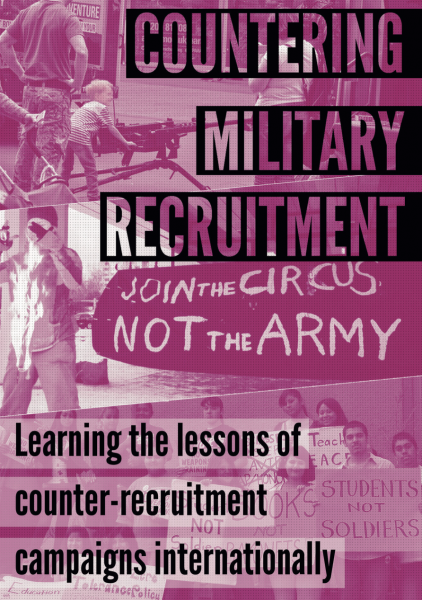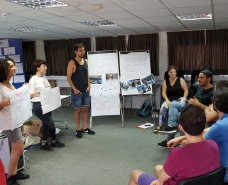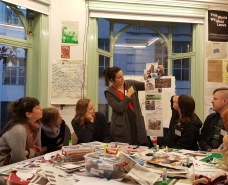The Violence Behind The Words 'Be a Man'

By Katherine Marrone - Alternet
When a man shot and killed nine of his college classmates at Umpqua Community College last October, people questioned the number of guns he owns and the depths of his loneliness. When a man walked into a showing of the movie Trainwreck and killed two and injured others, police described him as “kind of a drifter.” And when a man killed six and injured 14 in Isla Vista in 2014, reporters contemplated the possibility of a narcissistic personality disorder.
After a violent attack, observers can be quick to jump to explain the attacker's psyche and put the blame on mental illness. But what often goes underexamined is the role gender plays in violence: Over 90 percent of homicides are committed by men.
We know that men commit acts of violence at a much higher rate than women. We know this so well, in fact, that we rarely talk about it. Of course it was a man who killed his ex-girlfriend in a jealous rage—not the other way around. Of course high school boys raped a fellow classmate and filmed it. It's only when women commit acts of violence that suddenly violence has a gender. Just look at the way in which the media reacted to the the woman involved in the 2015 San Bernardino shooting: She’s the “mother-turned-killer.”
The researchers who founded the first-ever master's program in masculinity studies say that to change our violent culture, we need to redefine masculinity.
The researchers who founded the first-ever master's program in masculinity studies say that to change our violent culture, we need to redefine masculinity.“We say that violence is a bad thing, and yet our culture lives and thrives on it. Just look at the media, at the way we spend so much money on the military and on the way we train our police in this country,” said Webster University Anthropology Professor Don Conway-Long, a board member of the American Men’s Studies Association and longtime advocate against men’s violence who’s part of the the burgeoning field of masculinity studies at universities nationwide. While programs looking specifically at women and gender studies began in American universities in the 1970s, it has taken longer for academics to take a hard, critical look at masculinity. Last fall marked the start of the country’s first-ever master's program in masculinity studies, which is housed at Stony Brook University. And Conway-Long himself is creating a freshman seminar at Webster about toxic masculinity called “Why People Choose Violence.” “Classes that focus on analyzing cultural notions of masculinity could help us fuel the national discussion on masculinity we need to have,” said Conway-Long.
When Obama spoke about gun violence in the State of the Union address this January, he focused on the importance of gun control laws and pointed out that domestic violence takes the lives of thousands of women every year. He’s right—an essential part of changing our country’s relationship to guns is changing a culture that associates masculinity with guns and violence. The gun Adam Lanza used to kill 26 people at Sandy Hook in 2012 was advertised by Bushmaster Firearms as a semiautomatic rifle that could “reissue” one’s “man card.”
Considering that, in some states, it’s easier to obtain a gun than an abortion, we can’t disregard that gun violence is caused by a combination of factors—but we also shouldn’t overlook that men are three times more likely to own a gun than women, that three women are killed by their partnersevery day in the United States, and that at least one in five women will be sexually assaulted while they’re in college. Gun violence is tied in crucial ways to how we teach, learn, and reinforce ideas about masculinity that socialize men to repress feelings and to prove their worth with force.
“The three worst words you could say to a boy are: ‘Be a man,’” says Dr. Michael Kimmel, a sociologist, author, and founder of the Center for the Study of Men and Masculinities at Stony Brook University. In books like Angry White Men: American Masculinity at the End of an Era, Kimmel argues that men must recognize the roles they play in a violent world, as well as their responsibility in changing it. Violence against women and children aren’t “women’s issues”—not when the overwhelming majority of perpetrators are men. Men have to make those connections, Kimmel says, so that men can understand how a feminist world is a better world for everyone. The way masculinity is constructed and enforced hurts men—and women, and everyone else.
When discussions about violence and masculinity come up, they often get entrenched in a tired debate over whether men are "naturally" more violent than women in some way. Numerous studies have proven, again and again, that there’s no such thing as a "male" or "female" brain. Anthropological research further backs up the scientific idea that men are not inherently more violent than women. Conway-Long points out a community found in the Louisiade Archipelago of Papua New Guinea called Vanatinai. On this sparsely populated island, men and women live equally, assertiveness and autonomy are highly and equally valued as personal qualities for males and females, and violence and aggression are condemned and rare—for both men and women.
Take a look at studies done on American men, and you’ll read a very different story—one that further emphasizes the link between male gendering and violence. Men are more likely to become violent (and homophobic and sexist) due to the ways they’re educated and socialized—not because of some sort of inherent tendency toward violence. A study from Stanford University found that when a man’s masculinity was questioned, he was more likely to place blame on the victim of a date rape or sexual assault. Another study showed that when men were randomly told they were "feminine" by researchers, they were more likely to support male superiority, the Iraq War, and become homophobic. At the same time, while there are proven mental-health benefits to talking about feelings, all too often, boys are taught to repress feelings of sadness, hurt, and compassion, and not to open up lest they appear weak. This contributes to a society where adult men are three times more likely to commit suicide, more likely to become abusers of alcohol and drugs, and much less likely to seek help for mental health issues.
In the 2015 documentary The Mask You Live In, director Jennifer Siebel Newsom examines the way gender stereotypes limit boys and men, with catastrophic results. “From a young age, we’re taught not to express our emotions,” says educator and anti-violence advocate Tony Porter in the film, explaining how both parents and pop culture impress upon boys that they must “man up” and never cry, talk about feelings, or let people see them sad. These lessons in repression contribute to bullying, feelings of alienation, and violence. Boys in the U.S. are more likely to be diagnosed with a behavior disorder, be prescribed stimulant medications, fail out of school, and binge drink. Because of socialization, and the "feminization" of feelings, boys can’t be their full emotional selves, making them, as Newsom says, “corpses of human beings.”
“There’s so much violence in our culture because so many people are taught to value power and dominance, regardless of the cost to themselves and others,” says Newsom. “The film hopes to combat that: We want to expand the national conversation on what it means to be a man.” As it is today, violence and cultural notions of masculinity are so interlinked that violence becomes a vehicle for proving one’s self-worth.
A critical way to expand this conversation, the film points out, is to make sure boys have positive male role models in their communities and schools, if not their homes. Groups like the Ever-Forward Club, a program dedicated to serving middle school and high school boys of color and facilitating critical conversations about masculinity and violence, are a great example of this. Incorporating teachings about toxic gender roles into sex education programs, a sphere in which many U.S. schools are lagging, is also critical.
“Boys learn gender roles at home, and it can even be worse on playgrounds and schools,” says Newsom. “That’s why it’s critical that we have these discussions about masculinity when boys are young, in our homes as well as in our classrooms.”
In addition to gender, race plays a role in violent masculinity. As progressive policies and democratizing movements gain traction in our country—legalizing same-sex marriage, pushing for equal pay, combating unfair and racist police brutality with the #BlackLivesMatter movement—we are faced with the rise of the "Angry White Man," says Dr. Kimmel. White privilege plays a role in white men feeling threatened by a world that doesn’t just cater to them. It’s a phenomenon Kimmel calls “aggrieved entitlement.” As Elliot Rodger said in the sickening YouTube video he uploaded before his 2014 shooting rampage in Isla Vista: “Girls gave their affection, and sex and love to other men but never to me… You will finally see that I am in truth the superior one. The true alpha male.” Rodger didn’t just believe he was entitled to women’s bodies because he was man, he also believed he was entitled to their bodies because he was white. In reference to Black men dated white women, Rodger wrote that he deserved more than those who "descended from slaves."
“Though the ‘Angry White Man’ is a dying—and increasingly older—group, they’re there, and they’re louder than ever… men who believe that the America they were entitled to, the land of ‘unlimited opportunity,’ is being taken from them,” says Kimmel. “Trump is a perfect example: He channels that idea of Angry White Man every time he talks about ‘restoring’ America, making it great again. And, really, what he means, is making it right for the American White Man.”
Our ideas about manhood are also changing, though. A growing number of men are becoming involved in issues once deemed only "women’s issues": Last year, sports teams partnered with the “It’s On Us” campaign to spread awareness surrounding sexual violence and men’s involvement in its prevention. Kimmel points out his 17-year-old son doesn’t subscribe to a masculinity defined by rigidness, à la Don Draper. That gives him hope for future generations of men to come. Newsom points to Obama’s tears during his State of the Union speech as proof of a shift in the way our culture validates men’s emotions—a welcome alternative to the sort of hypermasculine image our country is used to seeing from politicians (like Ronald Reagan).
Studying how masculinity is constructed and drawing connections between traditional male gender roles and violent outbursts is key to creating a safer society for everyone. Until we live in a world where feelings aren’t associated with the feminine and that doesn’t deem the feminine as lesser, we won't be able to have healthy outlets for anger. Until we stop glorifying retribution and anger within the context of masculinity, we won’t be able to convince men that their “man card” isn’t something that can be taken away—or demanded back with force.
“We need to show boys and men that violence is a choice—not something innate in our biology,” says Conway-Long. “We need to show that when you are trained in violence, you will use it. We need to show the importance of having a serious conversation about men and masculinity and violence in this country.”
Source: Alternet
Countering Military Recruitment

WRI's new booklet, Countering Military Recruitment: Learning the lessons of counter-recruitment campaigns internationally, is out now. The booklet includes examples of campaigning against youth militarisation across different countries with the contribution of grassroot activists.
You can order a paperback version here.








